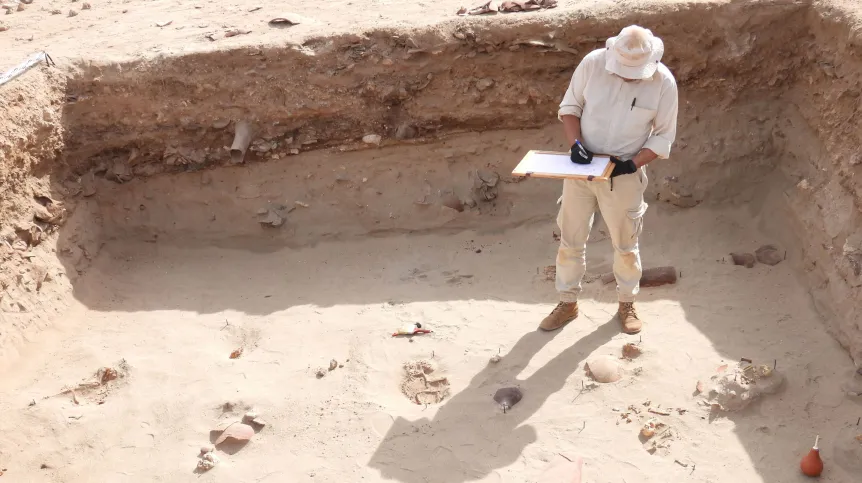
Polish archaeologists have discovered over 200 graves of monkeys, dogs and cats in an animal cemetery from the 1st and 2nd centuries in Berenike, Egypt. They also found burials of calves, which - they assume - were sacrificed at the animal cemetery or a nearby religious building.
An international team led by Dr. Marta Osypińska from the Institute of Archaeology at the University of Wrocław in a consortium with the Polish Centre of Mediterranean Archaeology, University of Warsaw, returned to the unique animal cemetery from the 1st and 2nd centuries in Berenike.

Berenike on the Red Sea is an ancient port built by Emperor Tiberius shortly after the annexation of Egypt by the Roman Empire. For the Empire, it was an intercontinental 'hub' through which exclusive goods flowed from India, Asia, Arabia and East Africa. Archaeologists have long suspected that the Third 'Cyrenean' Legion was also stationed in Berenike. The legion was famous for pacifying the uprising in Jerusalem in 70 CE.
The pet cemetery explored by Osypińska's team was built at a time when representatives of the Roman elites appeared in the port, in the early 1st century CE. Family pets, including cats; dogs and monkeys were buried there. Before the last season, archaeologists had recorded over 500 animal graves in the area, including several graves of monkeys.
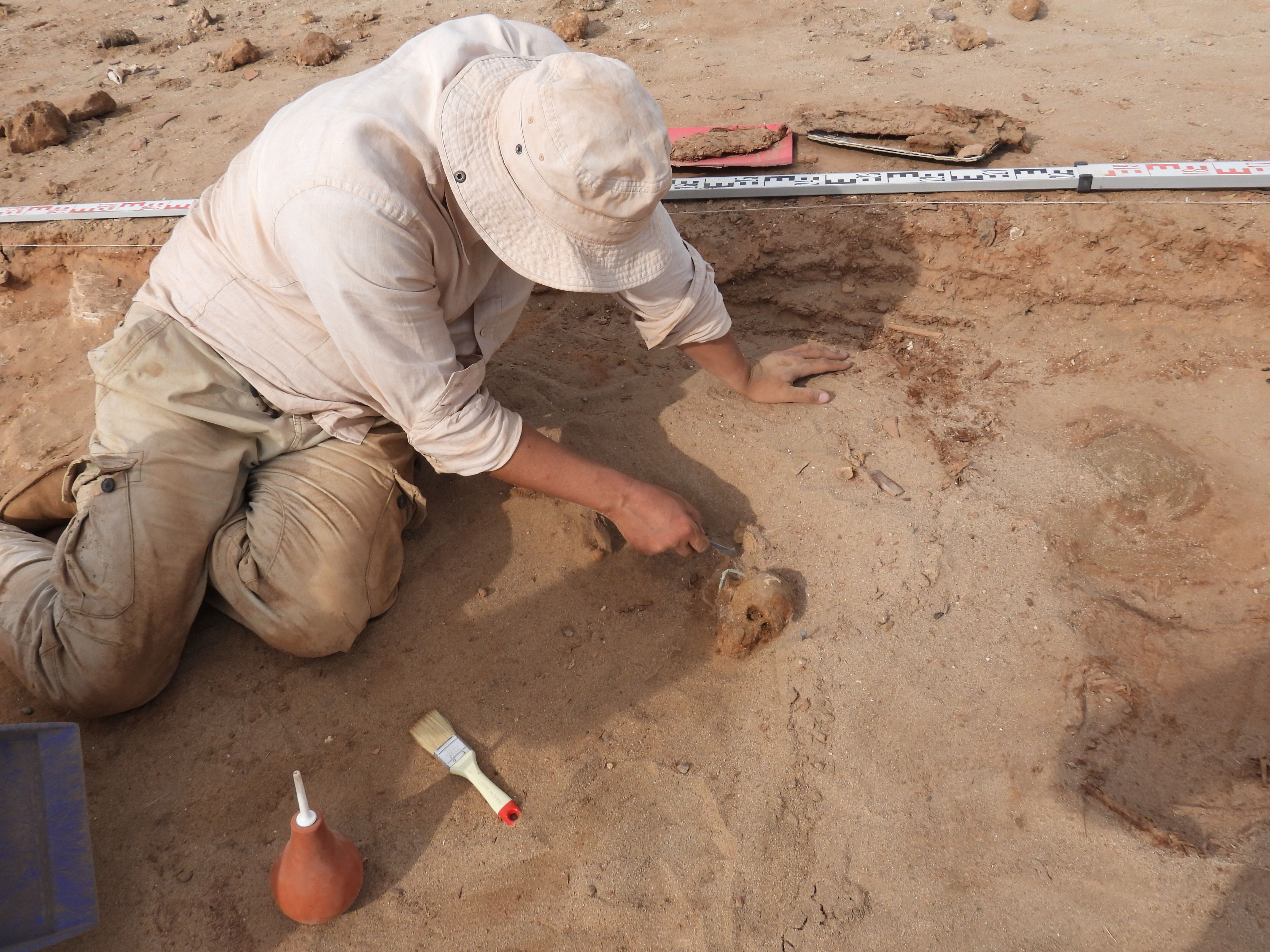
Last season, the team started research in a new location. Already on the first day it turned out that such an accumulation of animal burials had never been recorded anywhere before.
'Over the course of two months, in a 5 by 5 meter trench, we recorded over 200 of them. Interestingly, monkeys, very rare elsewhere, were very numerous in this location', says Dr. Osypińska.
The fact that their status was special and they were treated almost like people is evidenced by a different way of burying than in the case of dogs and cats. Each of these monkey graves is also a little different. 'They were placed as if they were sleeping on their sides, with their paws next to their faces, wrapped in fabrics, covered with blankets', Osypińska says.
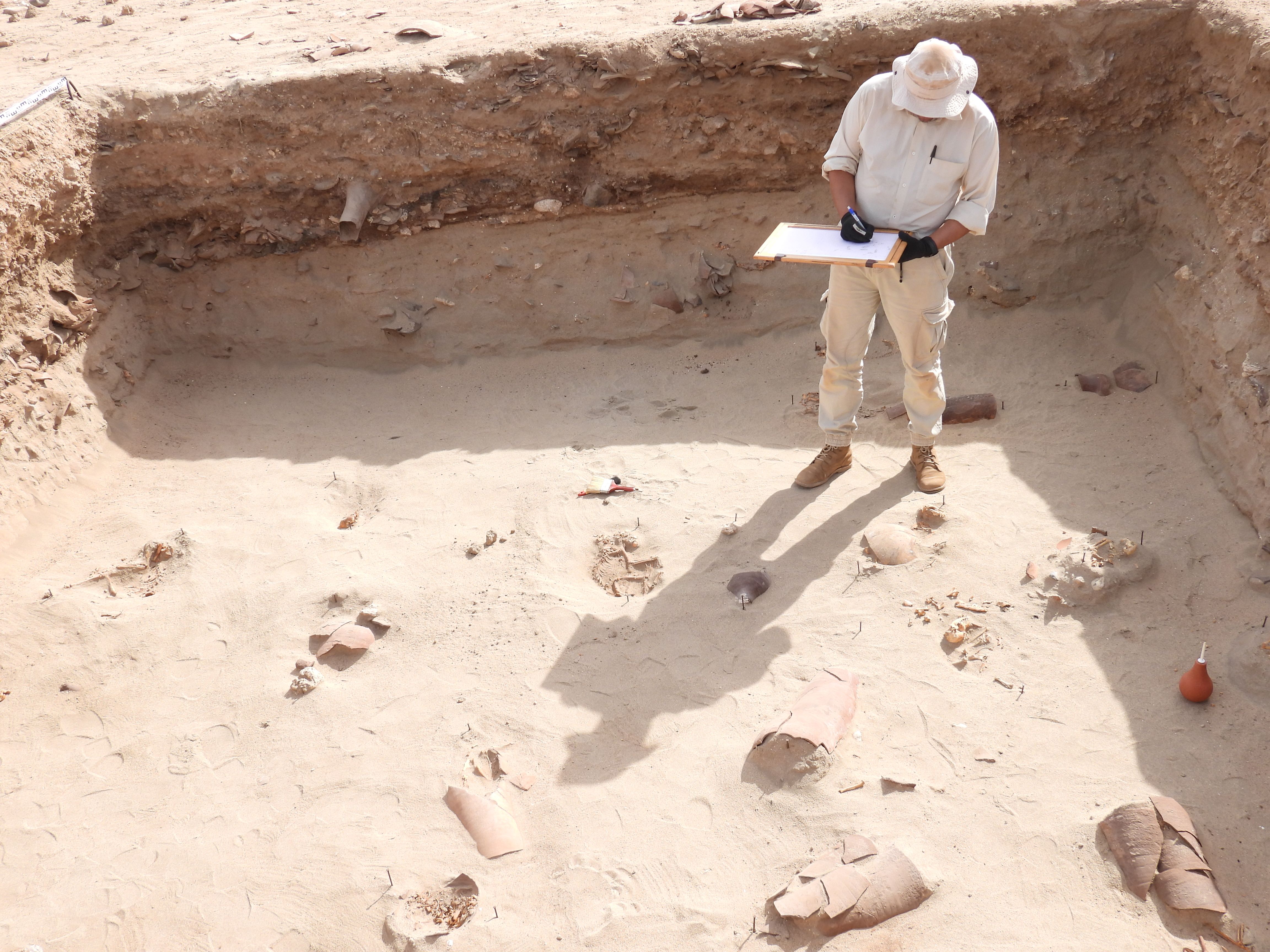
Among animal graves, only monkey burials contain additional items. They are most often playthings: opalescent shells, rags, a cow's tail, but also collars or harnesses.
Monkeys were quite often buried with their pets. In one of the graves from earlier seasons, researchers found a piglet, and very often the monkeys were accompanied by very young cats. In one case, the bodies of a vervet and a kitten were positioned to embrace each other. 'There are many videos on the Internet showing that, for example, young rhesus monkeys love small cats. They play with them like with children', Osypińska says.
She explains that in the 1st and 2nd centuries, Berenike was 'the absolute edge of the world'. Centurions, i.e. officers and commanders of Roman legions, came there for six months, when ships with goods arrived.
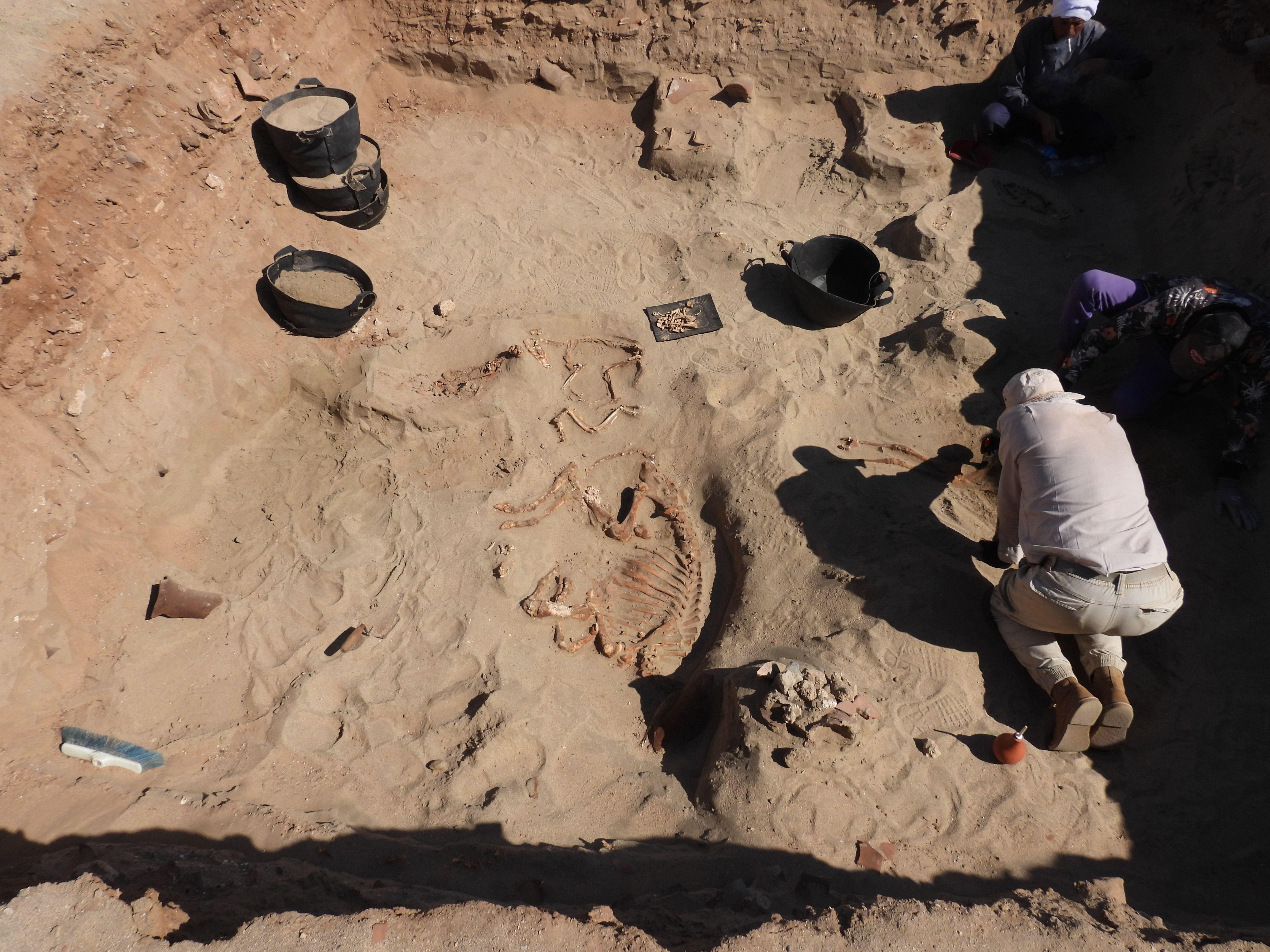
'They probably could not bring their families with them. I think that Roman matrons and children would not be able to live in this climate, it is a pure desert, without drinking water, nothing grew and still does not grow there. Monkeys, because they were so human-like, had a soothing effect and were a substitute for family. There must have been animals with which people established emotional relationships, which our findings confirm', Osypińska says.
On the last day of this year's excavations, archaeologists reached the bottoms of two huge pits. They found the burials of two calves. Both were buried with their heads smeared with a thick layer of ocher. The older calf had its head additionally covered with a large fragment of an amphora.
The researchers believe that they were the first 'residents' of the animal cemetery. They could have been sacrificial calves for the animal cemetery or a sacred object in the immediate vicinity.
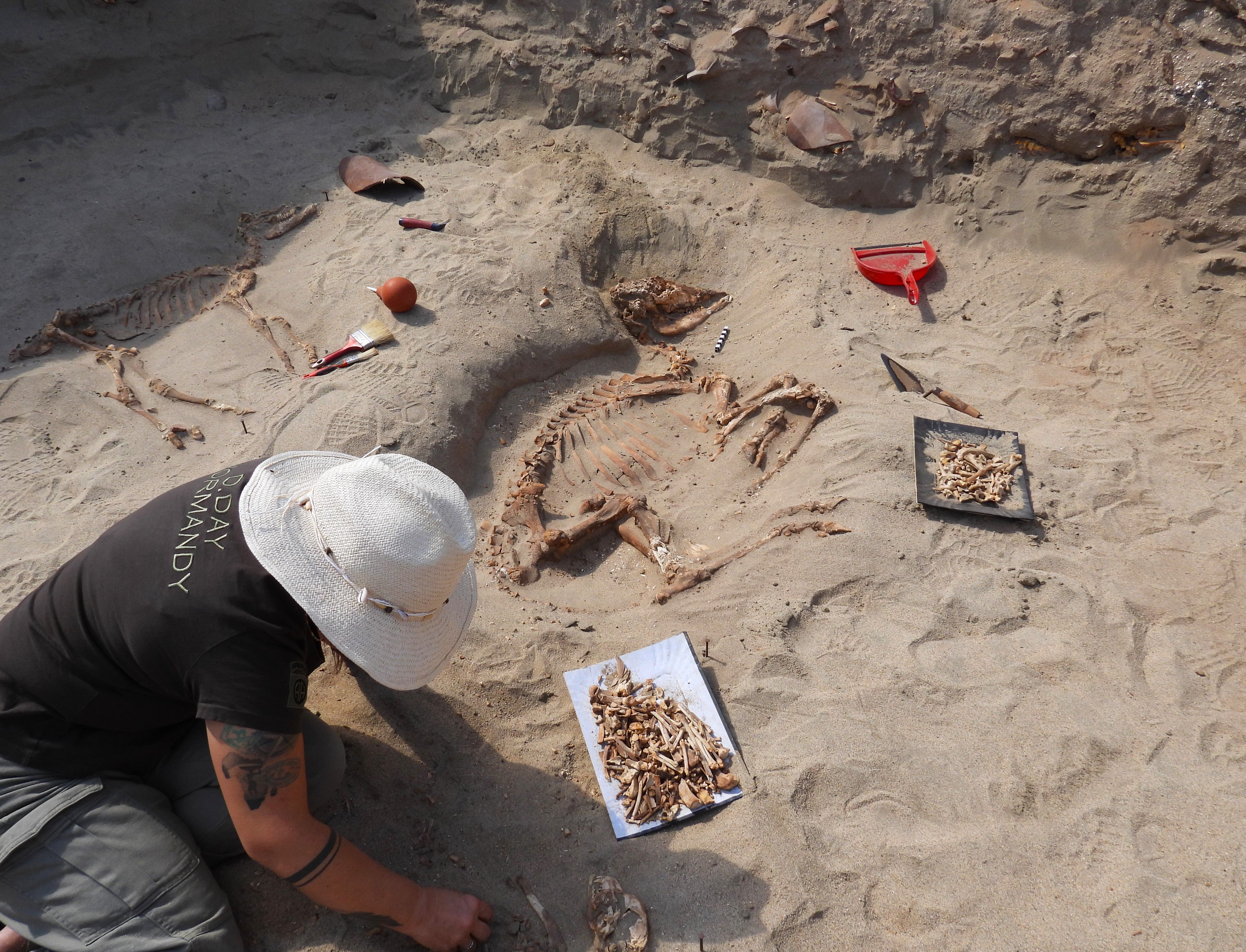
This year's research at the Berenike cemetery is a continuation of previous excavations. The discovery of monkeys and the identification of two species of macaques among them - the rhesus macaque and the bonnet macaque - was a sensation for archaeologists in 2020. Both live on the Indian subcontinent. Until then, scientists had not suspected that the Romans imported live animals across the ocean. The logistical challenge of such an undertaking seems impressive even today.
'It was a shock for archaeologists. Previously, there had been reasons to believe that contacts were maintained with India, e.g. pepper was found. However, there was no clear evidence of this. Initially, the head of our Polish-American mission, Professor Steven Sidebotham of Delaware University was sceptical that the monkeys we discovered could have come from India. That was until his team found the second part of a certain sculpture in 2023. Four years ago they found its lower part and everyone thought it was Zeus. Last year, a few meters away from the original find, they discovered the head of Buddha. Later, kitchenware from India was also identified. The pieces of this puzzle began to fit together’, says Osypińska.
Her project 'Non-humans in Berenike society’ is financed by the Polish National Science Centre. The Polish-American mission in Berenike is led by Dr. Mariusz Gwiazda from the Polish Centre of Mediterranean Archaeology, University of Warsaw and Professor Steven Sidebotham from the University of Delaware in the USA. (PAP)
PAP - Science in Poland, Ewelina Krajczyńska-Wujec
ekr/ agt/ mow/ kap/
tr. RL













